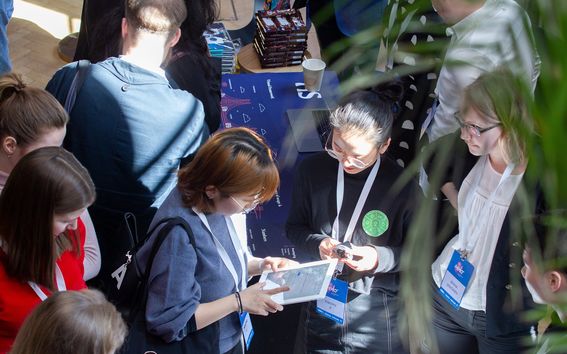Team's description of the project
Mimi is a dementia-oriented social technology that expands on the notion of having family, relatives and healthcare into one encompassing ‘safety net’. By frequently generating questions and memory prompts to respond to, our service connects persons with dementia with their family members and relatives, which requires little time and effort. The responses to these prompts, be it speech, video, photos or any format, are collected into personalized libraries that can be revisited.
At the same time, through the use of natural language processing and machine learning, Mimi assesses on the basis of text and speech input, the cognitive performance of the persons with dementia. These results are then collected and presented into personalized reports to the various users. In this way, Mimi harnesses the power of 'social interaction' as both cognitively stimulating and as a measurement of cognitive performance.
At its core, Mimi harnesses ‘social interaction’ both as a treatment and measurement plan for persons with early to mild dementia (cf. cognitive impairment). Next to this, we developed three key features of our solution that warrant further discussion.
Personalized libraries
During our desktop and field research, we thought about the cognitive tools that families use for collecting and recollecting memories: think about photo albums, diaries, WhatsApp groups and the like. Recollecting and telling the story of memories often have a beneficial effect on cognitive performance, which is a method also used in nursing homes (Woods et al, 2021). As Mimi generates prompts, with questions like "What's special about the place you grew up?", the responses it receives can be structured much like an interactive "photo book" or played back like a social "tape recorder". We envision that Mimi could gradually, through intensive long-time use, be relied upon as an external "web of memories" for families or a training method for persons with dementia.
Multi-device platform
As Mimi caters to three different user groups (persons with dementia, family members of differing age groups and general practitioners/healthcare), we considered the values and needs for each of them. To lower the threshold in initiating contact between family members, we developed Mimi in an intuitive app-format that can be used on top of existing social sharing applications (cf. Whatsapp). Next to this, we theorized that persons with dementia can benefit from a flexible and recognizable digital screen that integrates in the home interior. Having the touchpoint of Mimi in a familiar nook, diminishes the chance of persons with dementia getting confused about the service.
Ethical discussion
The research that we collected illustrates that on the basis of speech, accurate predictions about the onset of mild cognitive impairment can be made almost a decade before (Dethlefs et al, 2017). This will only develop more accurately with more data. As we believe that Mimi can lead to a person-centred (rather than a patient-centred) care model, it begs the question when to start implementing this system. Before symptoms occur? And more importantly, whom does the system listen to? In common sense, Mimi would analyse the cognitive performances of the elderly members in the family, but what is the argument for not listening and interpreting for the benefit of each family member?
REFERENCES
- Dethlefs N, Milders M, Cuayáhuitl H, Al-Salkini T, Douglas L. A natural language-based presentation of cognitive stimulation to people with dementia in assistive technology: A pilot study.
- Inform Health Soc Care. 2017 Dec;42(4):349-360. doi: 10.1080/17538157.2016.1255627. Epub 2017 Jan 9. PMID: 28068146.
- Woods B, Aguirre E, Spector AE, Orrell M. Cognitive stimulation to improve cognitive functioning in people with dementia. Cochrane Database Syst Rev. 2012 Feb 15;(2):CD005562.
- doi: 10.1002/14651858.CD005562.pub2. PMID: 22336813.
–
In the autumn of 2021 students enrolled in Emerging Designs course were given a brief to design concept for tackling problems in the healthcare system. The focus was on developing healthcare and social care in sparsely populated areas of the Nordics, visioned in 2030 with distance spanning solutions. Altogether seven concepts were created and Mimi is one of them.











